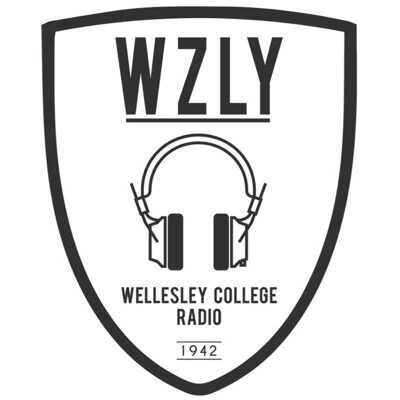My Favorite Colors as Told by Shoegaze Albums
by Charlotte Adams ‘25
Shoegaze has contributed some very valuable albums to music history. I’m sure Loveless by My Bloody Valentine and Souvlaki by Slowdive come to mind. Notably, there are some hidden gems whose album art happens to be in my favorite colors. Here are my favorite green, black, and purple shoegaze albums.
Green: You’d Prefer an Astronaut
In 1995, Hum released my “green” album, You’d Prefer an Astronaut. Its second single, “Stars,” received a lot of commercial success, but the whole work has a truly iconic mid-90s shoegaze sound. Melancholic and full of longing, the album has a nearly ethereal beauty that should place it alongside some of the greats of the genre. In fact, Deftones cited You’d Prefer an Astronaut as a major influence for the band in The Quietus. Mainly concerning the vastness and mysteriousness of space, this album certainly has a spacey quality. Standouts from the work of course include the slamming chords and eerie vocals of “Stars,” but some other pieces that encompass this era of the genre are “Little Dipper” and “I Hate It Too.” The warm fuzziness of mid-90s shoegaze feels almost comforting despite the more gloomy undertones of this album. The somber themes themselves seem comforting; You’d Prefer an Astronaut is almost like a consolation for the mysteries of space
Black: Deathconsciousness
One of the hallmarks of shoegaze is the gut-wrenchingly sad Deathconsciousness by Have a Nice Life. This is my “black” album and truly one of my favorite albums of all time. The poster child of the record label The Flenser, Have a Nice Life’s project was actually recorded on a very low budget, often using personal equipment of member Dan Barrett, which adds to its grittiness. A true indie production, it’s deserving of the cult following it has received on internet forums. Labeling it as “black” is a bit of a stretch, as the cover art is just a darkened version of David’s The Death of Marat, but it is mostly black and the overall tone of the album is undeniably dark as well. It’s full of ominous doom, a concept album of a cataclysmic fate. I’d also recommend another project of Barrett’s known as the artist Giles Corey. Corey’s self-titled album is one of the most heartbreaking things written in contemporary indie music and is truly haunting to listen to.
Purple: Mauve
Mauve by Ringo Deathstarr is a more recent project reminiscent of albums of Hum’s era. My “purple” album, the 2012 release is about as close as the early 2010s gets to 80s- and 90s-shoegaze. The group has had some success, but Mauve is definitely one of their less-known pieces. Perhaps this is due to how closely it resembles artists like Slowdive and Ride—perhaps people expect a more contemporary sound from a newer band. I find this album to be quite nostalgic, though, as its warmth seems to evoke earlier groups with a more dreamy auditory aesthetic. Listen to “Fifteen” and “Rip” to get a better idea of this album’s relationship to its precursors. This album isn’t just a throwback piece, though. I think it added to the world of 2010s shoegaze by redefining the genre through the context of earlier works. Focusing back on “old masters” brought the genre depth and legitimacy as well as its characteristic dreamy and pensive qualities.
All the hazy gloom you could want and more is available from these albums. I think they exemplify their colors, so use that as your guide when choosing what to listen to. There’s a lot to shoegaze as a genre, especially considering how it has evolved from low-budget scenes to a must-listen on music forums everywhere. I encourage exploration—there’s a niche for every taste.




